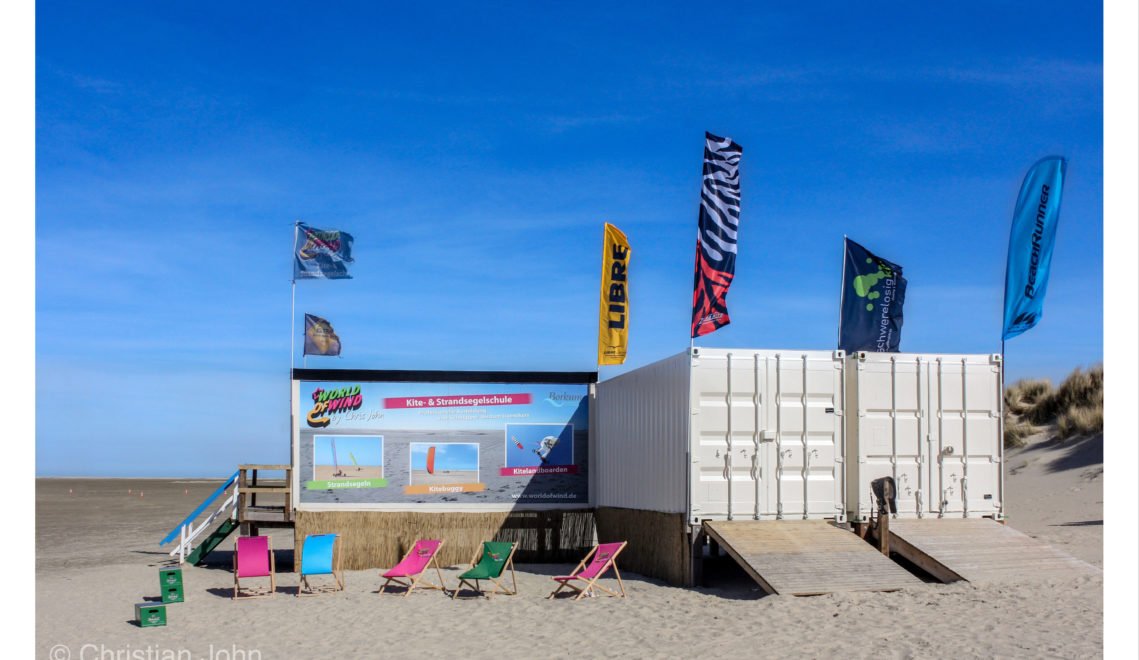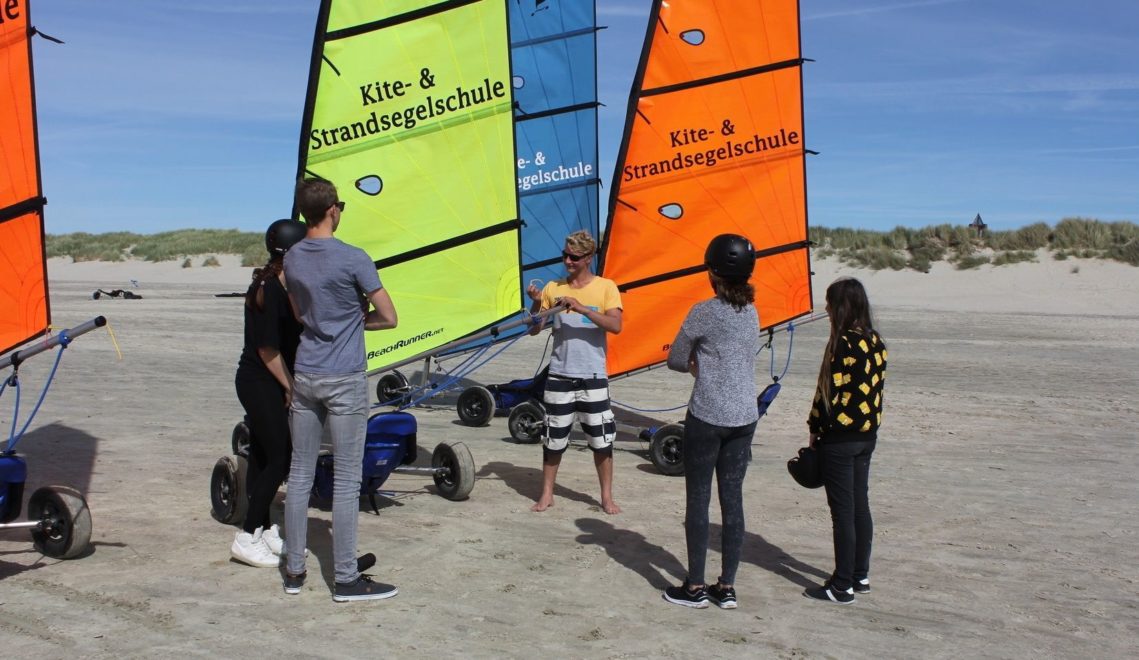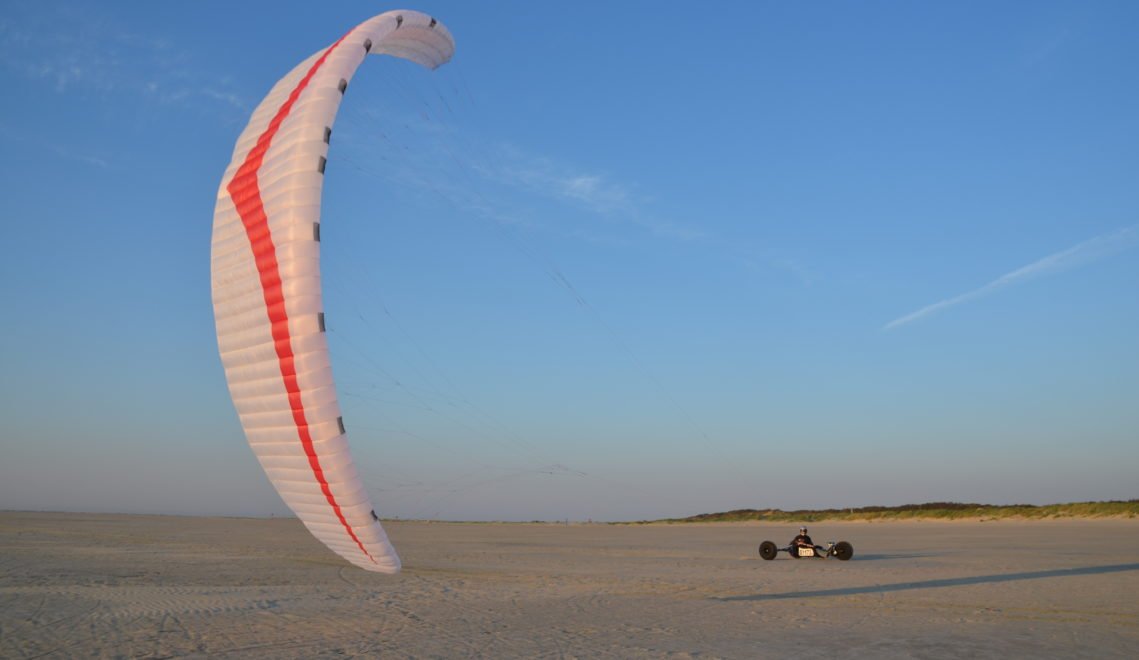Borkum
Borkum
You can also enjoy the pleasure with due distance. From the observer's perspective, so to speak. Preferably with binoculars around your neck and your dog firmly on a leash. Because what professional beach sailors do on Borkum, in the middle of the UNESCO World Heritage Wadden Sea, is comparable to a Formula 1 race in the desert of Abu Dhabi. The pulse races just from watching.
Borkum
From a distance, the companions still look like harmless lines on the horizon. But watch out! They come shooting at us at ape-like speed. Men and women, squeezed into thick dry suits, their heads on their necks, their noses in the wind. At speeds of well over 100 kilometers per hour, they sweep almost silently across the beach. Shells shatter under the tires, water fountains spray, concentration and adrenaline fill the air. Only those who can read the beach and the winds, who keep their eyes open and their sails firmly under control, reach the finish line. All others either land in the tideways or simply get stuck in the sand. But that doesn't matter. Fun is guaranteed in any case. But beach sailing has to be learned. And Borkum is the ideal place for it.
The East Frisian Island (30.7 km²) is one of the most popular and predestined beach sailing areas in Europe and offers excellent conditions for beginners in the taster course, advanced and professionals. Speeds of up to 130 kilometers per hour on the beach make the hearts of windsurfers and speed enthusiasts beat faster. Compared to this, any federal highway is a laughing stock. This kilometer-long, spacious beach knows no traffic jam. There is always a fresh breeze. And - due to the high seas climate and healthy air - the athletes enjoy every breath in their streamlined projectiles.
This is how you get to Borkum by train and ship: Plan arrival.


Beach gliders are highly equipped bolides made of plastic and carbon fiber on three wheels. Racing cars with sails, so to speak. In their early days, they were still flying boxes of the self-made brand, but they have long since arrived in the world of trend sports with their own world federation (Federation International de Sand et Landyachting). In addition to England, Scotland, France and Belgium, the sport has also been practiced on Germany's coasts for decades. But it all started a long, long time ago.
Researchers discovered the oldest sailing chariot in the burial chamber of the Egyptian pharaoh Amenemhet III in the Hawara pyramid (1842 to 1795 BC). He recognized the advantages of a land sailer and had it used for transportation purposes in the desert. How cool!
The Chinese also used large sailing chariots from the first millennium AD. With them, they transported up to 30 people over several hundred kilometers.

And in Europe? At the beginning of the 17th century, the governor of Holland, Prince Moritz of Orange, commissioned the Flemish mathematician and engineer Simon Stevin to design a large sailing carriage modeled on the Chinese cargo sailors. The vehicle reached 30 kilometers per hour and was celebrated as the "Miracle of The Hague". From then on, beach sailing became a popular sport. As early as 1909, the first regatta was held on the beach at De Panne in Belgium. In 2009, Englishman Richard Jenkins reached a record-breaking 202 kilometers per hour on a salt lake in Nevada.
For a long time, Borkum has also been considered a hot spot among beach sailors. They lovingly refer to their spot as the "most beautiful sand pile in the world!" There is no speed limit. Only the beach, the sea and of course the wind.
How a beach sailing day on Borkum could look like, you can see in the video:
Cover photo: Jet off into the sunset at 130 km/h © World of Wind 2020